1. How supported do you feel?
We asked some quite intense questions last week, especially for a summer break! But there is a reason!
How supported teachers feel in their school really matters. Not only teachers being supported by SLT and heads, but also how supported senior leaders feel too! Anecdotally, people only tend to talk at the extremes. “I hated my school, the SLT weren’t supportive” or “My school was amazingly supportive”.
What did the numbers actually say? Here’s what we found out…
4-in-5 teachers feel supported by their senior leadership team, and primary teachers feel marginally more supported by than secondary ones.

The majority of classroom teachers also feel that at least one of their senior leadership team is out of touch with the reality of classroom teaching. Only 9% of classroom teacher said they had never felt like this!
Even 1-in-4 headteachers felt that one or more of their SLT were out of touch with classroom teaching, at least occasionally. Given that senior leaders (including heads) are often given portfolios of responsibility that are away from the classroom – for example, managing a new building project, or covering track and trace operations – this is less surprising than it may first seem.
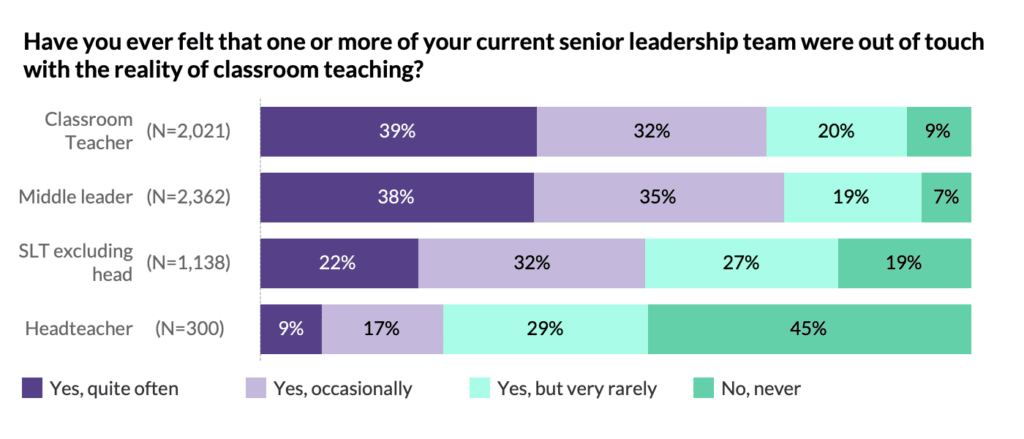
When working in a school, it’s important classroom teachers feel they can raise issues and have them be acted upon. Without such an outlet, teachers are likely to feel disempowered.
22% of teachers said they felt their school leaders didn’t address teachers concerns about school issues.
Combining the two questions about ‘being out of touch’ and ‘addressing concerns’, we found a relationship between the two. Those teachers who said their concerns were adequately dealt with also reported more often that their SLT remained in touch with classroom teaching. Those who felt that teacher’s concerns weren’t dealt with consistently felt that their SLT were out of touch with classroom teaching.
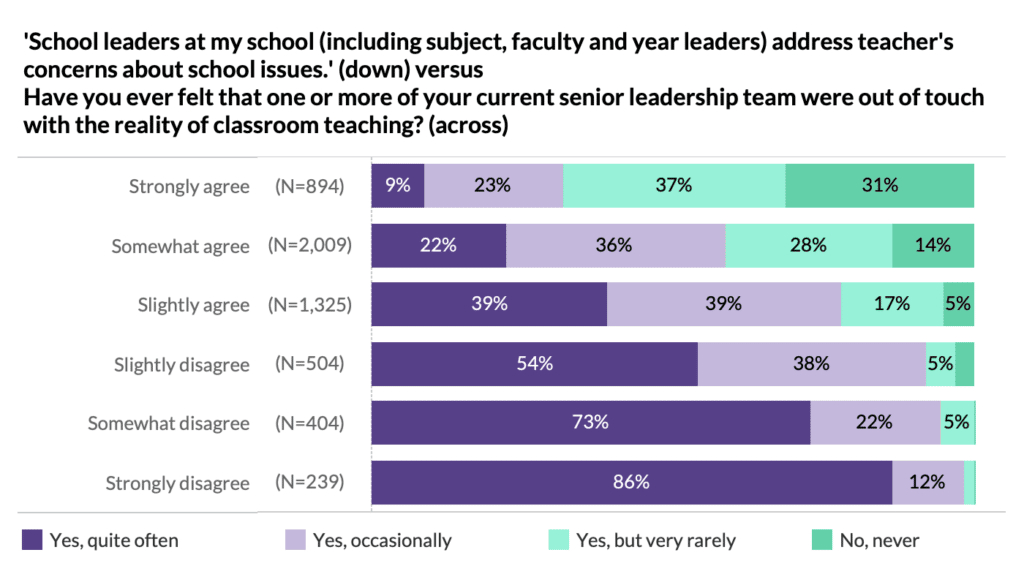
2. Teacher Introspection
This week, we’re asking several questions about professional development and we started by asking you to be reflective of your own personal development.
The vast majority of you were confident that you understand your own strengths and weaknesses in your classroom practice. While there was little difference in those who disagreed with this statement, teachers with more experience are more confident in their practice, compared to their less experienced peers.
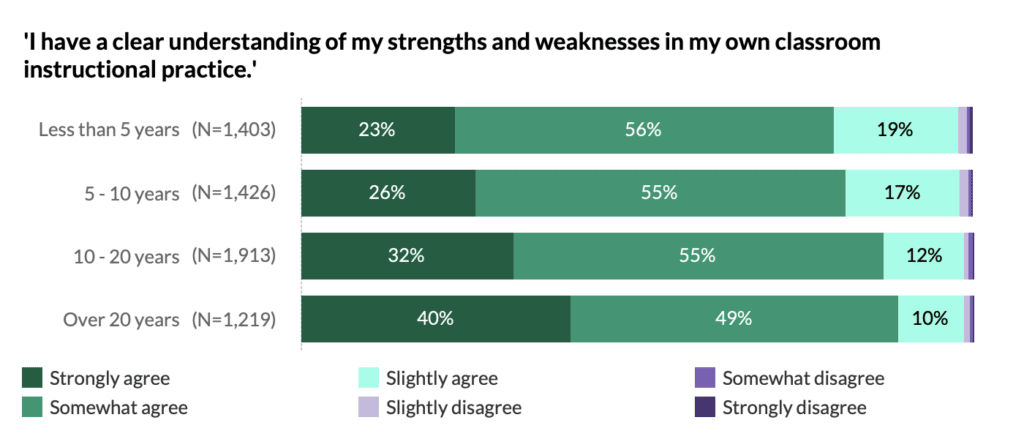
The vast majority of you also often reflect on your practice. 1-in-3 teachers reflect on their practice in the classroom daily, with many more reflecting either weekly or monthly. Headteachers were more likely to reflect more than once a month, but often reflect weekly rather than daily.
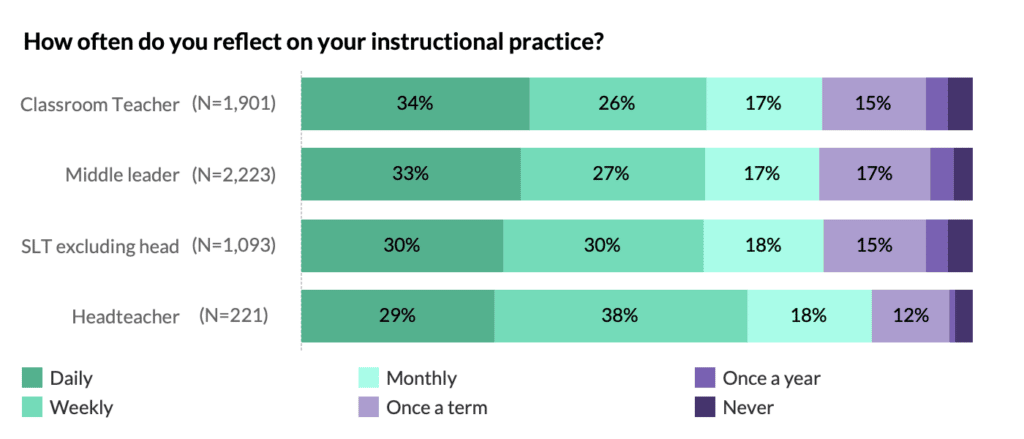
Finally, primary school teachers more frequently meet with colleagues to plan and share resources. Over 50% of Primary teachers saying they meet at least weekly, compared with just 37% of Secondary teachers. In fact, many more secondary teachers meet and plan just once a term.
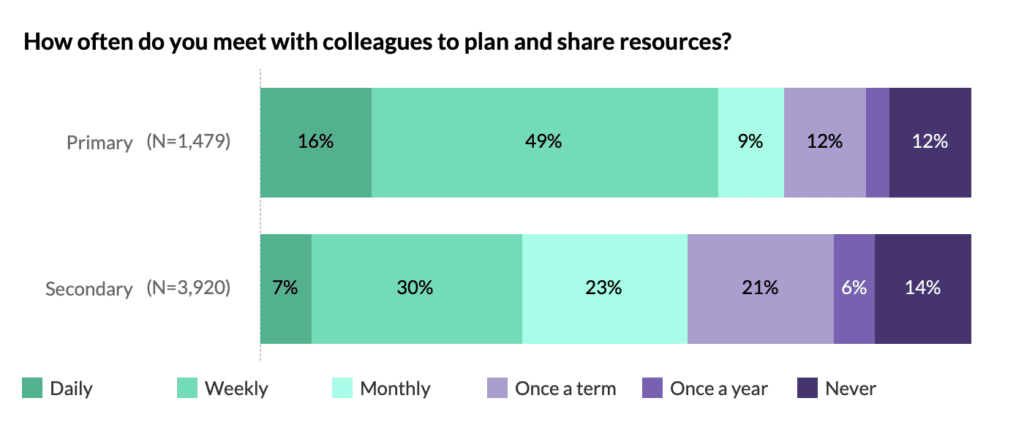
3. Teacher Tapp Summer Quiz Olympics!
The Teacher Tapp Summer Quiz continued this week 🤓 Now that Round 1: What year? has finished, we head straight into Round 2: How many?
For those who didn’t know already, the literacy hour was introduced in 1998 as part of the government’s National Literacy Strategy. It required primary teachers to deliver a daily literacy lesson under a set structure; whole-class reading and working, followed by group or individual work. The aim of the literacy hour was to raise the standards of pupils’ reading, writing, spelling and grammar skills.
Understandably, many more Primary teachers knew when the literacy hour was introduced than Secondary, with 41% correctly responding compared to just 23% of secondary teachers. Looking at secondary teachers alone, it was English and Humanities teachers who responded best, at 27% and 26% respectively.
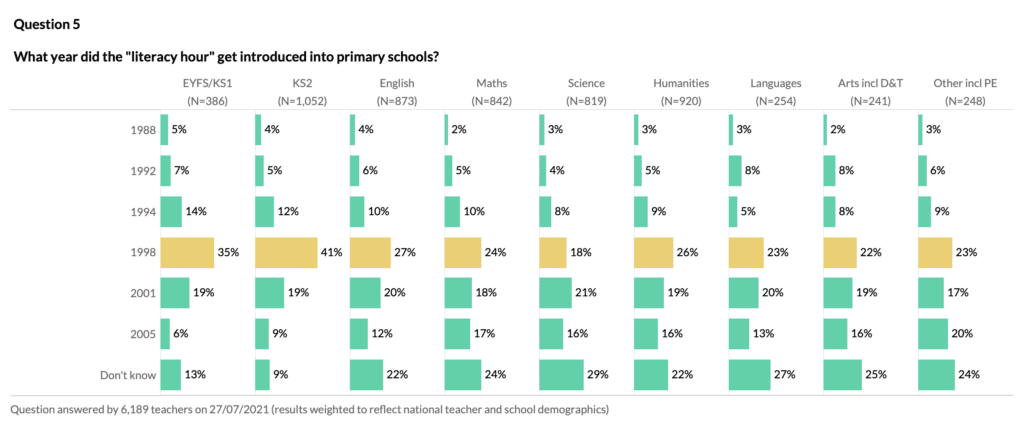
One of our “How many” questions this week asked how many pupils are in receipt of Free School Meals (FSM)? Overall, 35% of teachers correctly answered this, although it may come as no surprise that teachers in more deprived schools were more likely to get this one correct. 1-in-2 teachers in schools with the highest proportion of students receiving free school meals got this correct. This compares to 1-in-4 from schools with the lowest proportion of FSM students.
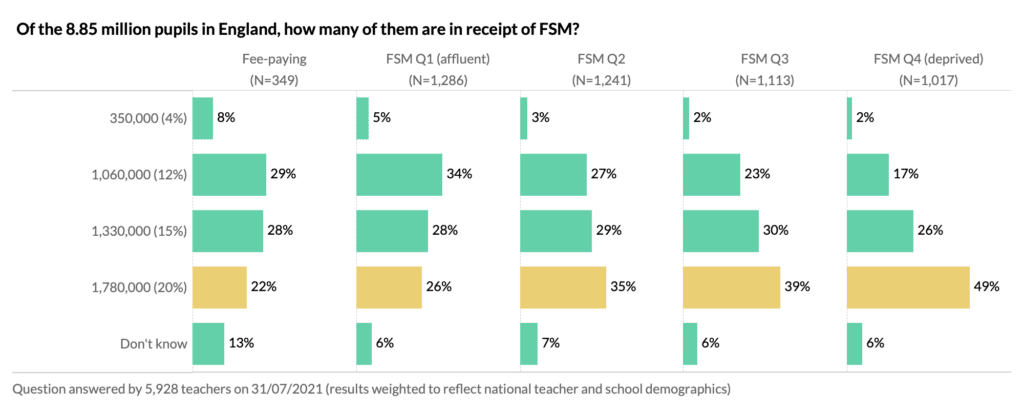
The race for the most successful region continued. The Midlands claimed the first two gold medals by having the highest percentage of teachers correctly answering the first two quiz questions. Since then, their golds have dried up! They have now been caught by the South West and London, now on two golds each. Who will come out on top in the end?
| Region | Gold | Silver | Bronze |
|---|---|---|---|
| Midlands | 2 | 2 | 2 |
| South West | 2 | 1 | 0 |
| London | 2 | 0 | 0 |
| North West | 1 | 2 | 0 |
| Yorkshire and North East | 1 | 2 | 0 |
| South East | 1 | 1 | 2 |
| East of England | 0 | 1 | 5 |
Call out for Primary colleagues
🚀At Teacher Tapp we are really interested in the views from primary teachers and we’d love to grow the number of you who use the app. If you know a primary colleague who you think would enjoy the daily insights that give an accurate picture of how thousands of colleagues are thinking please share Teacher Tapp with them! teachertapp.co.uk/get-the-app.
❓ If you’ve got any question suggestions then you can Contact Us via the menu in the app or send us a tweet @TeacherTapp.
📰 We love sharing daily reads with you all on and we’re always on the look out for ones we’ve not featured. It’s really easy if you’d like to make a suggestion to do so here.
📣 And if you’d like a pack of posters/coasters to display in your school, to tell people about Teacher Tapp, then please fill in the form here!
Finally, we know you love the daily read, so here are the ones from last week
The most read tip this week was: Can a font improve your memory?, but make sure you stay informed by reading all the latest research, including this different take on fonts.
And here are the rest for your reference:





